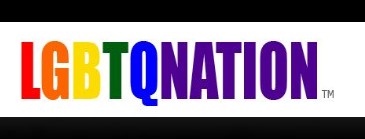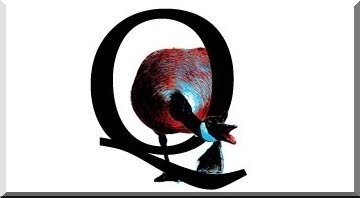 By Matt Katz (Philadelphia, Pennsylvania) Apr 6 | There Goes the Gayborhood- An annual parade that makes St. Paddy’s Day look sober. Enough outrageous-looking people to cure you of self-consciousness forever. And the comfort in knowing that “It’s Raining Men” is playing, at any given moment, somewhere in your apartment building. This is the American gayborhood. If you’ve never been, I’m sorry to report: It’s already dead.
By Matt Katz (Philadelphia, Pennsylvania) Apr 6 | There Goes the Gayborhood- An annual parade that makes St. Paddy’s Day look sober. Enough outrageous-looking people to cure you of self-consciousness forever. And the comfort in knowing that “It’s Raining Men” is playing, at any given moment, somewhere in your apartment building. This is the American gayborhood. If you’ve never been, I’m sorry to report: It’s already dead.The name is explanatory. It’s where gay people lived and hung out, somehow fulfilling stereotypes while simultaneously stimulating social justice. Gayborhoods were born in the second-half of the 20th century in relatively run-down, forsaken parts of cities, away from the establishment that could give a damn about man-on-man P.D.A., and side-by-side with others who found themselves similarly sidelined: the poor, drug addicts, ethnic minorities. Sometimes referred to with the euphemism “artists,” gays became the Marines of gentrification, storming and conquering destitute places. Then, unencumbered with the financial burden of Huggie’s, ballet classes and lunch boxes, they dropped cash. Disposable incomes turned vacant factories into lofts and abandoned lots into community gardens. They brought a live-and-let-live attitude, a sense of style, and several places to eat sushi.
Gayborhoods were in their prime when they struck the right balance of seedy and shiny, with porn shops, hourly motels and peep-show joints next door to home decor shoppes, vegan bakeries and restaurants serving foix gras and $15 cosmos. In this way, they became the vanguard of something different, something that’s really more exciting and interesting than gay, per se, and this right at the time that every other place in America began to look increasingly the same.
The gayborhoods succeeded in their fundamental mission: to offer safety, community and empowerment. But maybe they succeeded too well, because it turns out other people want that stuff too. Suddenly, everyone wanted to live there. And like avatars on Pandora, that popularity is what killed it. The rainbow flag that gays planted signaled to other assorted demographics – hipsters, liberal-leaning couples with young kids, actual artists, myself – that the neighborhood had been conquered, with flair. So we came, hungry for cheap space and a higher cool quotient. The death may have gone unrecognized by some. But for me, a straight man with a proclivity towards societally marginalized people (and neighborhoods), the kind of gayborhood where I lived has disappeared.
I first discovered gayborhoods in high school, when I took the train to Greenwich Village and realized that these were places to go to buy and/or gawk at bongs, vibrators and an amazingly wide variety of porn. Then came Dupont Circle, Washington, D.C., where I worked in 1997 amidst two gay book stores, one across the street from the other. Wow, I thought. How many gay people must live here to necessitate two book stores just for them? There were bathhouses and cruise parks, too, but newcomers wouldn’t know about those. Like all neighborhoods, the gayborhoods had their secrets.
Commonly known as the Fruit Loop, Dupont had hipster coffee shops and pricey boutiques and gay biker bars, all on one street. I saw men, during daylight, cuddling on benches, as other men – sometimes most men – walked past, holding hands. The neighborhood was alive at all hours, with a charming irreverence absent elsewhere in our institution-oriented nation’s capital. It was far less provincial than Georgetown, safer than Adam’s Morgan and more unique (with a trend-setting farmer’s market and an annual High Heel Race of drag queens) than anything I had ever known. There’s something funny and joyful about a place where people don’t pretend that the real world is anything all that important, where cleverness, artistry and merriment is applauded. It’s not that you can’t join the club if you’re not gay; you can’t join the club if you’re not funny.Today, some of the gayborhood’s uniqueness and liveability remains, but the gayborhood-ness is harder to find. There are now zero gay book stores in Dupont. The day before the original, Lambda Rising, closed in January, I walked through the crowded store and found a 1976 book titled, simply, The Homosexuals, in which some of the subjects used pseudonyms. I was standing in a spot where 36 years ago, nothing less than liberation happened. Now, the revolution was over.
“A few people have been damn right angry,” the owner, Deacon Maccubin, told me. “‘How dare you close your business?’ They feel like it’s a part of them. They all see it as bittersweet.”
Photo By Brody Levesque
The closing was prompted more by the death of the publishing business than the death of the gayborhood, Maccubin said.
“The neighborhood is as gay as it’s ever been. There’s more straight people – but there’s not less gay people.”
Much of it comes down to math. There are simply more breeders than Bravo watchers.
But there are other factors, too. As the gayborhood became broadly popular, gays migrated elsewhere. In D.C., my gay BFFs Aaron and Rick live in a hot neighborhood, U Street, which is unrecognizable from the place I remembered when picking up hypodermic needles for college community service in the ’90s. It doesn’t look or feel at all like the Fruit Loop, either, yet Aaron and Rick live in a new condo building where 90 percent (Rick’s estimate) of the residents are gay.
In a digital world, physical entities are less critical to community identity. So with more straights in Dupont and more gay people outside Dupont, maybe the gayborhood has grown passe. Why go to the gay bar in the gayborhood every night when you can hold hands at any old corner pub without risking your life? For that matter, why stay in a city at all when the suburban PTAs are now open for two mommies? The demise of the gayborhood indicates that America is more mixed - ethnically, economically, sexually -- than ever before.
And that’s all good, I guess. But I’m nostalgic. The week I moved to Philadelphia’s 13th Street in 2002, I went out for a late-night slice of pizza and had to maneuver my way through a large group of transvestites jumping double-dutch at the corner. I found out that this was no aberration, it happened every Saturday night. And it was far more interesting than anything happening on any other corner of the city. I joined the local gym – despite warnings from straights that it was only for gays. The fact that I was flirted with on two occasions I took as a compliment – that’s twice more than I was ever flirted with at “straight” gyms. One man squeezed my biceps. Even my wife doesn’t do that.
As I walked home one night, a man in a Mitsubishi Eclipse and Jersey plates tried to pick me up: He rolled down the window and cruised slowly passed, gesturing for me to hop in. When I ignored him, he circled the block, came back around, and tried again. I declined. Still, what’s a gayborhood without unusual employment options? The place was safe, sometimes skuzzy, always interesting. 

Photo By Matt Katz The Philadelphia Inquirer
That 13th Street is dead. Since I moved out, it has been branded “Midtown Village,” an official name that snuffs out the area’s unofficial nature. There’s a new wine bar and a new cocktail bar; there are two upscale Mexican restaurants. None of them is distinctively gay, or straight. The block caters to foodies and drinkers of all stripes. On my last Saturday night there, transvestites were nowhere amidst straight men with striped shirts on couple dates with women in black stilettos. But the biggest blow? Last week, a store around the corner, P.H.A.G. (sound it out), announced it is closing. Philadelphia Home Art Garden store will move its operations online.
There are still plenty of gay and lesbian bars - and residents - but something feels different. A friend of mine, a long-time straight gayborhood resident, says the Philly section has become a “legacy neighborhood,” with gay bars and annual gay rights parades, but without a regular influx of young gays to give it the perpetual state of change in which gayborhoods thrived.
This is apparently happening around the country. Aaron, Rick, my wife and I recently got vodka tonics at The Stonewall Inn in Greenwich Village, where unjust police raids in 1969 triggered riots that many believe launched the gay rights movement. It’s basically a dive bar that smells nice, except for the pictures on the wall from The Stonewall’s revolutionary days and a Ken doll on a ledge behind the bar having sex with another Ken doll.
So make sure to visit The Stonewall soon. Before you know it, one of those Kens will be replaced with Barbie.
Matt Katz is an award winning staff writer & news reporter for the Philadelphia Inquirer. Matt covers the City Of Camden, NJ, and surrounding areas as well as writes a syndicated column and has his own blog at Matt-Katz.com.






















0 comments:
Post a Comment